Like not wearing socks with your hand-made shoes and Armani slacks, this car is very Italian
By Terry Cobham, photography by Dennis Hitchcock
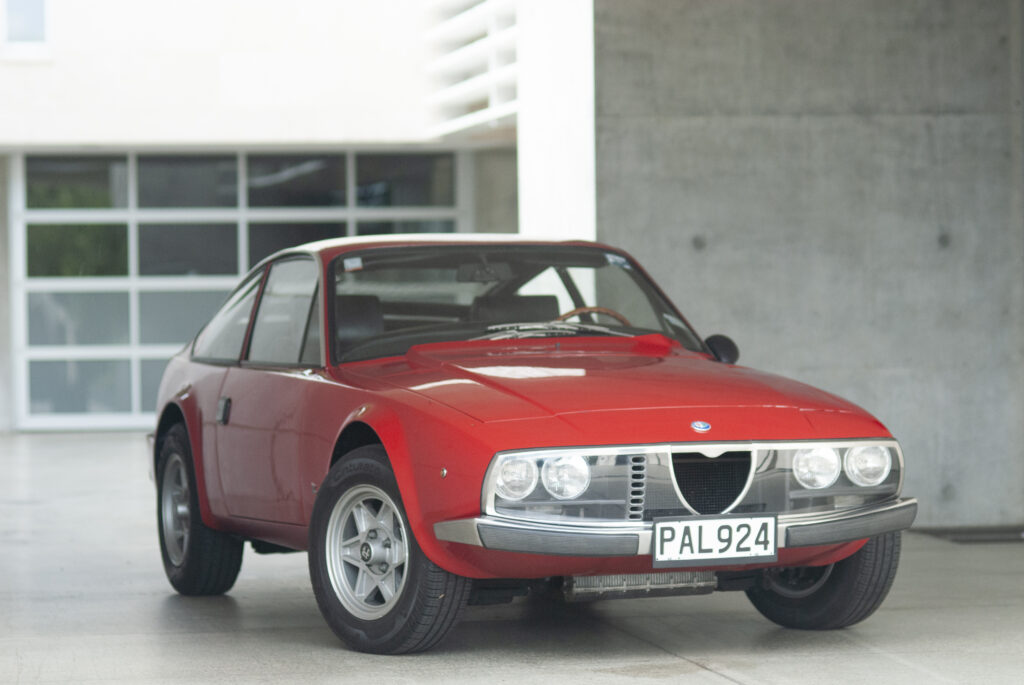
Photos don’t do it justice; they tend to flatten the curves. Rather than being made of the flat pieces of metal the pictures suggest, this car is in fact a collection of subtle and shaped curved lines that somehow look almost straight — sort of like Twiggy was in exactly the same era. The final result is just as pretty and doesn’t weigh much more than she did.
Milan, in the top left-hand corner of Italy, is a long-established home for Italian fashion houses, a place where craftspeople drape the finest materials over the finest forms to create some of the world’s finest fashion clothing. It is also home to another Italian design and create industry; it is the region that headquarters the Stellantis group, which used to be called Fiat, and Alfa Romeo is a part of that. So-called supercar manufacturers like Ferrari, Lamborghini, and Pagani are there, too, as are Italian coachbuilders, or carrozzeria, such as Bertone, Pininfarina, Touring, and Zagato.
As early as the 1920s Udo Zagato, the founder of the company that still bears his name, was creating the bodywork of various Alfas. This former aircraft builder had started constructing cars using aviation materials and techniques, and some of the first cars he constructed were for Alfa Romeo.
By the late 1960s Zagato was still a family-run company and management was moving into the hands of the founder’s sons. All the skills and traditions that had helped develop the Italian auto industry’s reputation for producing the world’s most stylish cars were on display at Zagato and its order books were full. Cutting-edge new models as well as fabulous very limited creations were coming from Zagato’s styling studios.
Alfa Romeo executives had not lost their enthusiasm for Zagato versions of their own models, and in this fertile period of stunning car designs they had asked Zagato to come up with a version of their already very-popular and very-pretty Alfa Junior 1300. The resulting Alfa Zagato Junior was reportedly the last project handled by Ugo Zagato himself. He was by then in his final stages of running the business, and this car is perhaps the last to show his aviation-inspired design commitment to lightness with aerodynamic efficiency.

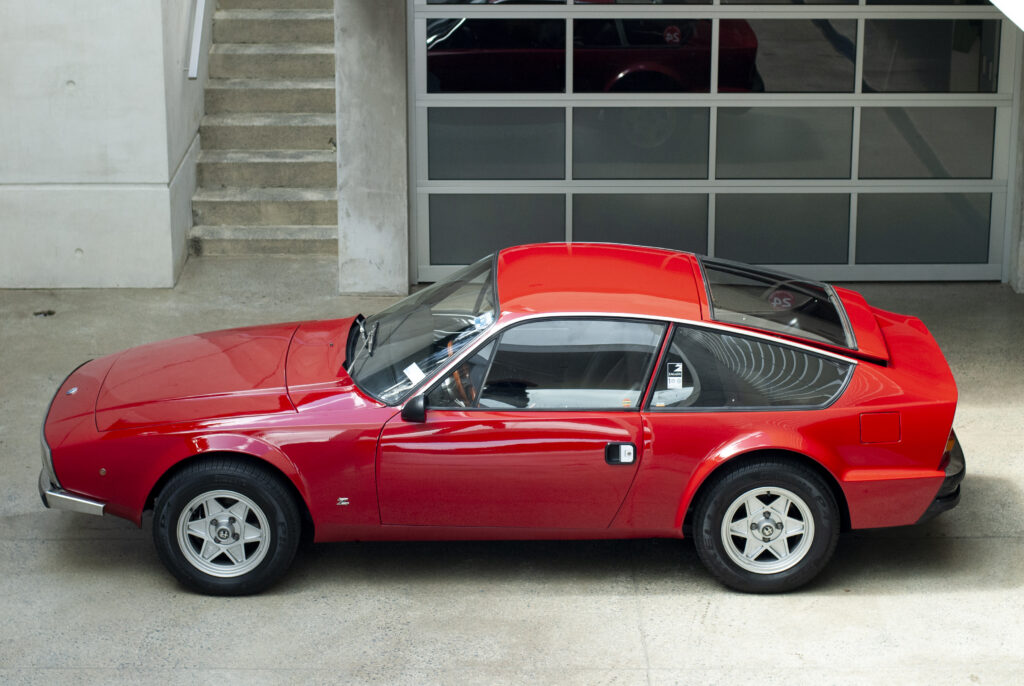
Design and fashion
The brief to come up with this car was handed to the chief stylist at Zagato, automobile designer Ercole Spada. He would eventually have designed notable cars for almost all of Italy, Germany, and the UK’s car manufacturers. He had not long before delivered the absolutely sumptuously beautiful Aston Martin DB 4 GT Zagato. This is perhaps the most famous Zagato-bodied car of all; it was the Sophia Loren of Italian cars, stunningly beautiful and gloriously shaped. Only 19 of these original DB 4s were made — until, that is, Aston Martin announced in 2019 that it would recreate this car with a ‘continuation’ series of another 19 cars.
The Alfa Junior 1300 project wasn’t just a case of reskinning the existing Alfa Junior in designer clothes. Instead, the lower slung Alfa Spider platform was chosen and the Alfa Romeo 1300 Junior mechanicals were attached to that. Spada then designed the Zagato version around that combination.
If the DB 4 was a 1960s beauty, the Alfa Romeo Junior Zagato was of a piece with 1970s fashion. Where the DB 4 was a symphony of flowing swirling shapes, the Alpha Junior is beautiful in the simplicity of its straighter lines. In fact, there’s not a straight line in its design; it is full of beautiful and subtle curves. In the metal, the car is exceedingly beautiful.
Underneath those designer clothes, the Zagato uses the motor, gearbox, drivetrain, brakes, and suspension from the Alfa production version Junior. These components are almost unchanged from the production Alfa.

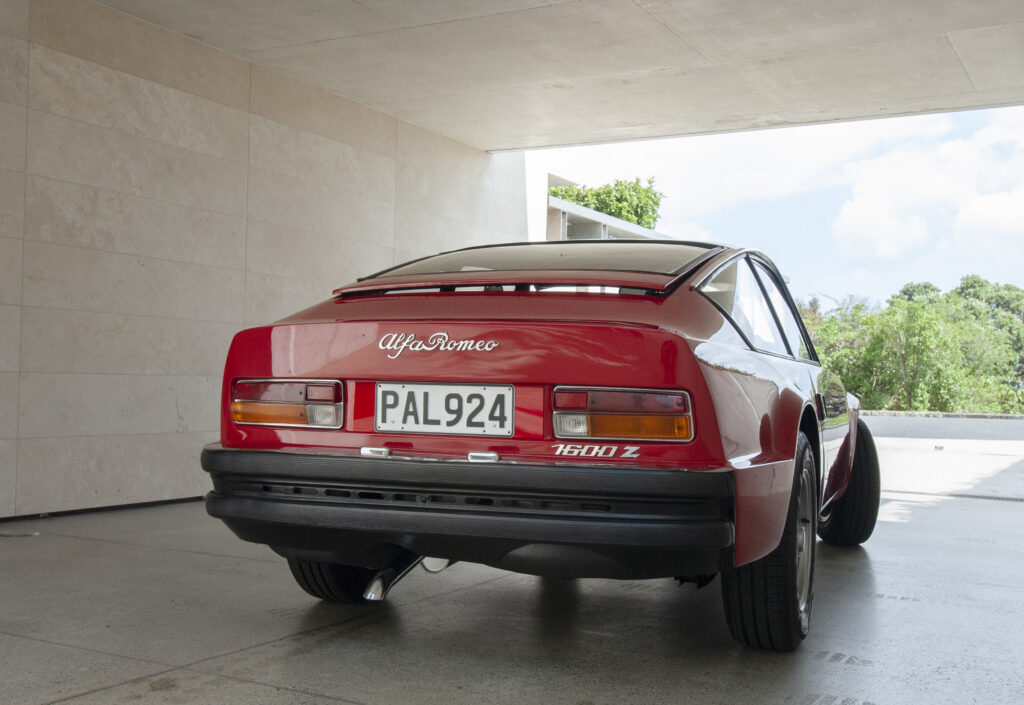
Transported across the world
When you walk into Paul Halford’s lock-up, you could be stepping back into that time when master craftsmen were making these cars. First of all, the building looks as if it belongs to the appropriate era. There’s no glass and tiles anywhere; you step off the street through an old-fashioned and substantial wooden door and into a world full of the romance and tales of older cars. Apart from the line-up of mouth-watering cars, there’s an old gantry slung from the roof that, 100 years ago, held Ford Model Ts as they travelled along an assembly line in this exact location. There are also genuine bits and pieces from some of Italy’s most famous sports car manufacturers hanging from that same roof, looking for all the world as if they’ll be used again shortly.
The line-up of cars is as good as you’d ever encounter, and this is all accompanied by that unmistakable smell of oil and wonderful older cars and their motors. You almost expact an Italian mechanic, cigarette in his mouth, to slide out from underneath one of the cars to grab another sip of his espresso. Sitting in the middle of all this and looking completely at home there is Paul’s Alfa Romeo Junior Zagato 1600.
Paul has an admitted passion for cars and the stories that go along with them, particularly for Italian cars, and even more so if they have a Zagato badge on them. This enthusiasm to know the stories attached to some of these cars led him to the Zagato factory and into a friendship with one of the senior staff from that enterprise. This created the opportunity for him to become the current owner of this Alfa Romeo. Paul’s Zagato friend, Dr Paolo di Taranto, who worked alongside Elio Zagato, suggested to Paul that he should be the new owner of his Zagato 1600.
In Paul’s words, “I considered the car’s pedigree, a Zagato design, the previous owner worked alongside Elio Zagato, and the fact that it is a lot of car for not a lot of money,” and it was a done deal.
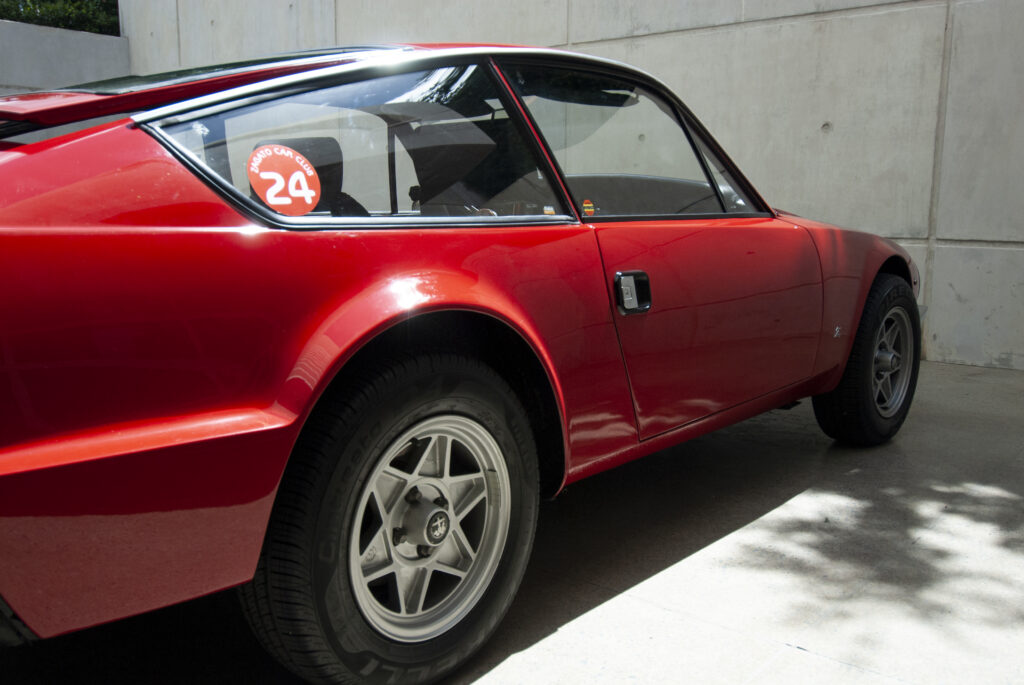
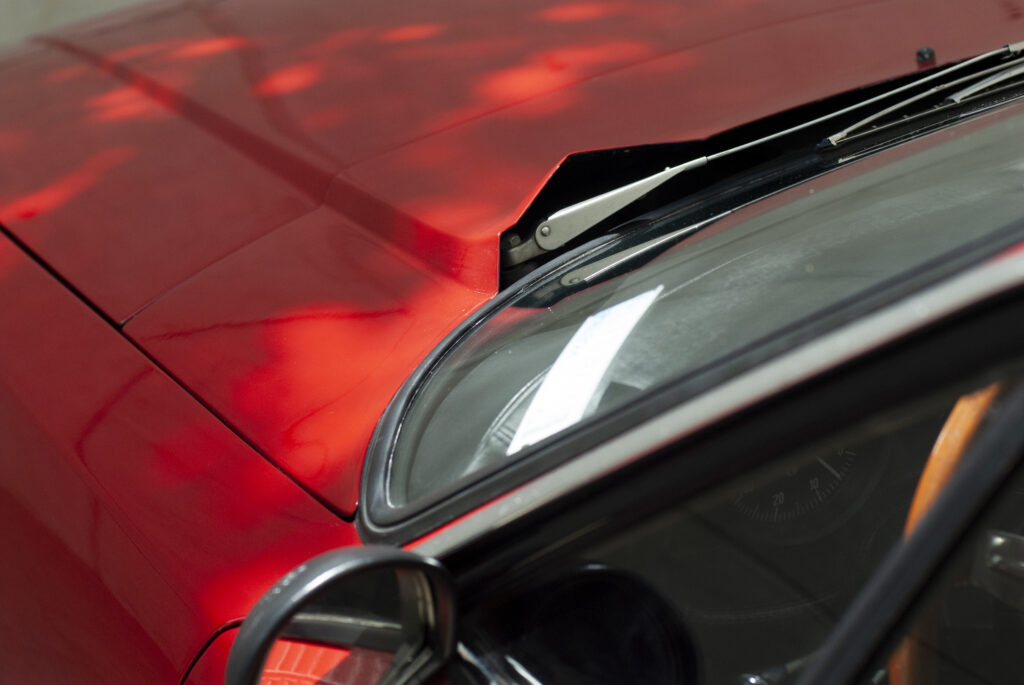
Transported around Italy
The production process itself is worthy of retelling. The Spider floor, the 1300 ‘round tail’ pan, was taken from the Alfa production line at Arese, Milan, and transported to the Zagato plant in Terrazzano, Milan, where the required and reasonable major alterations were made. This involved changing both the front and rear of the pan to accommodate the tapered front and squared-off rear of the Zagato. The modified pans were then trucked to Maggiora, Turin, to an Alfa plant, where the body panels were fitted. From there, these partially finished bodies were trucked back to the original Alfa factory in Arese for some initial painting. It still wasn’t over, though, because the now-complete body was transported back to the second factory, the Zagato plant, where the engine transmission and suspension were fitted. Four different locations and five stages for the production of each car!
Although it’s fun to imagine the process was typically Italian, and therefore overly complicated, it was in reality probably because the intended limited production meant it was not worth setting up a dedicated production line for this model. It also meant that the cars were expensive compared with the competition. Zagato was making too many of these cars to manufacture them on its own premises near Milan but not enough of them to make it worth setting up an entirely new production line.


Lovely lines
The looks of this car are deliberately clean and simple, as was the fashion at the time. It is small, very small, but still manages to look aggressive and purposeful. You can instantly see the family lines and a clear genetic connection to the Alfasud Sprint, which followed a few years later.
The wedge-shaped front end has a clear Alfa look. This is managed by simply cutting away a shield-shaped hole in the centre of the Plexiglas that serves as a covering for the headlamps. No need for the weight of any chrome grille.
The bonnet sweeps back from there to a very deliberate and sharp lip that stands up just in front of the windscreen, hiding the wipers from both view and the air flowing over the car. The hip line of the cabin is low, and even the highest point of the roofline is less than 1.3 metres from the ground. The overall effect is a perfect example of less is more, or minimalist design.
To sit in the car is like wearing a name-brand Italian sports jacket; it fits well, is made of lovely materials, and you feel very, very comfortable in it. The leather seats are worthy of any car bearing a GT moniker, and of course the Alfa exhaust always plays accompanying and appropriate music. All this helps you to more easily imagine you’re winding your way through a pass in the Dolomites.
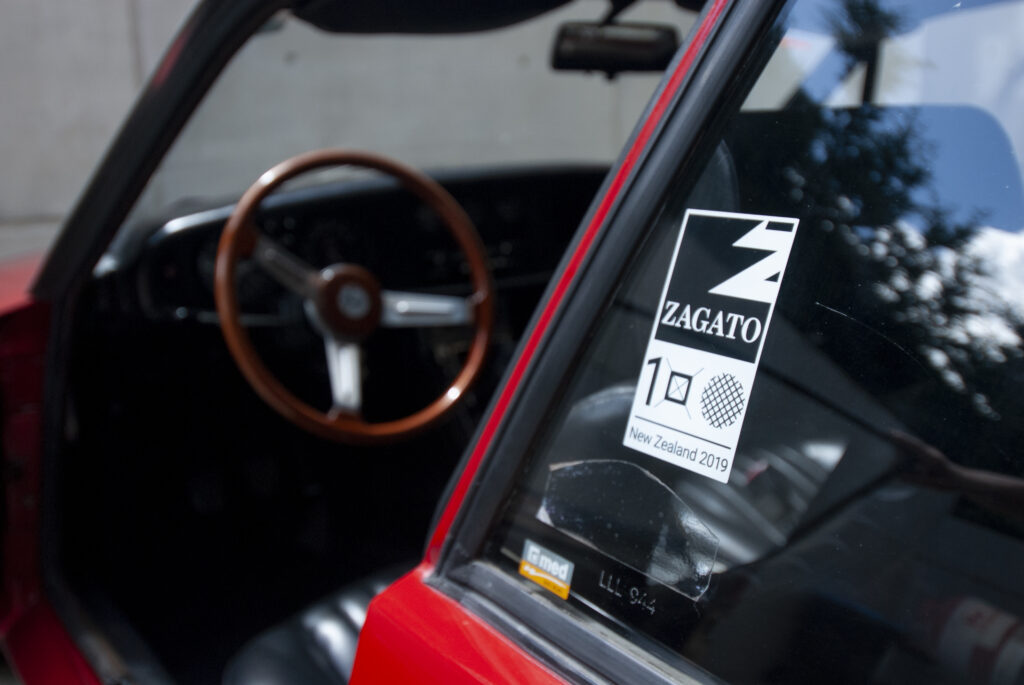

What makes it Italian?
The dashboard is very Italian. The large white on black dials through the wood-rimmed three-spoke steering wheel are just where they should be, right in front of you. Across, are three smaller gauges to monitor the other vital signs and, lower down, there are three toggle switches for fans and similar. Again, compared with today, just the minimum necessary.
The gear lever sticks out in a rather eccentric fashion through the lower edge of the dashboard or the top edge of the centre console. It shifts the gears in a five-speed gearbox and, although the Zagato would never be called over powered, at 125bhp the urge from the 1600 twin cam motor combined with the lightweight car means the Zagato version of the Alfa GT gets up and goes very well. It handles even better. This version is almost 100 kilos lighter then the Alfa Junior GT, so the four-wheel disc brakes also work very effectively.
Paul reports the car is a joy on a trip, and until recently it was to be driven by its previous Italian owner in this year’s South Island alpine rally. Sadly, that plan was just another scuttled by Covid.

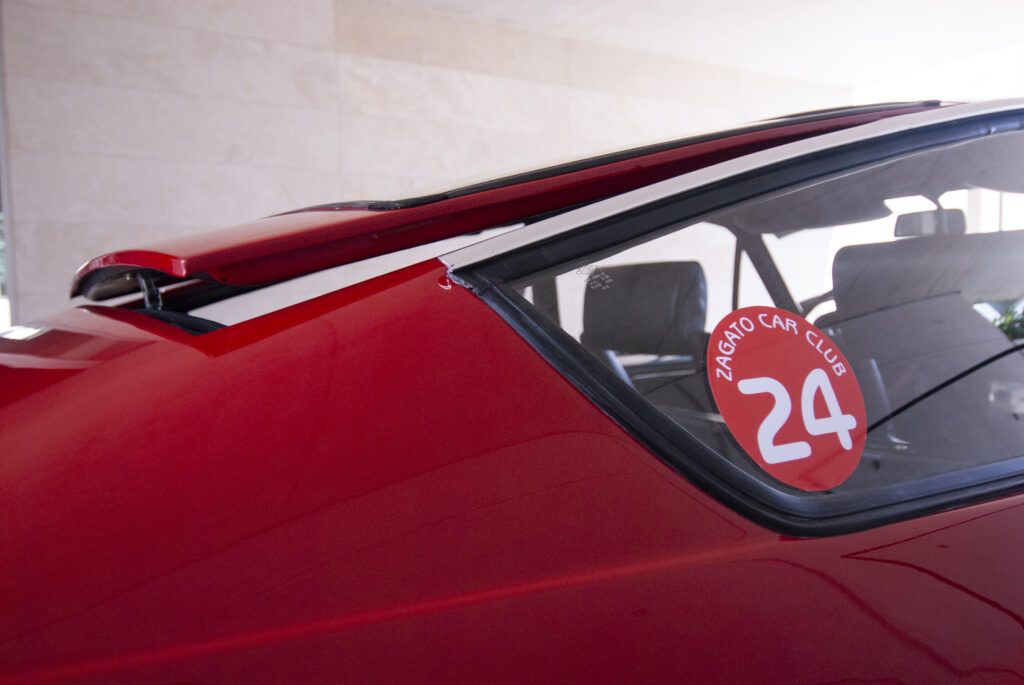
Italian fashion has its price
The Zagato Junior was never a car that would sell on price. Both the Alfa 2000 GT Véloce and the Alfa 2000 Spider Fastback sold for the equivalent amount. The two-litre Porsche 914 was 20 per cent less expensive, so price wise the Zagato always had a hard row to hoe.
For the first two years of production the car was badged as the Zagato Junior and had the 1300, 103bhp motor, but the end of production of the 1300 round tail Spider imposed a change. The new 1600 Spider platform was used, and to accommodate this Zagato redesigned the body a little — well, quite a lot actually — but it proves the success of this adaptation that, even though the length of the car was increased by 75 millimeters, it is barely noticeable. This was done by lengthening the car behind the rear screen.
This Alfa was never intended to be a limited-production run as many of the Zagato projects are, and it deserved to sell in greater numbers than it did. Just over 1100 examples of the 1300 — produced from 1970 until 1972 —were produced and sold. The 1600 version was manufactured from 1972 until 1975, and sold in even more limited numbers with only marginally more than 400 examples reaching production.
Today, about half of those cars produced still exist and they do come up for sale. These Alfas are a way of owning a Zagato version of a classic car for what can be described as a reasonable price. A quick internet search will show a number of cars for sale, mostly in Europe, for prices from $60,000 up to the lowish $100,000s.
Spare parts are still plentiful if they are from the Alfa catalogue; if they are from the Zagato list, it’s more a case of wishing the owner good luck.
These cars are from an era when a GT car was made to be quick, comfortable, and very usable. They are from before the era of computer everything, so you’re not likely to find a USB socket, digital controls, or any readout that tells you your average fuel consumption for the past 10,000 kilometres; in fact, that will be one of the last things you worry about after 10,000 kilometres. What this car does do is connect you directly, and in a very visceral way, to the pleasure of driving something made by craftspeople.
All you need now are the hand-made loafers and the dark glasses, a twisty mountain road, and a cafe with outside tables, so you can sit and admire your car.
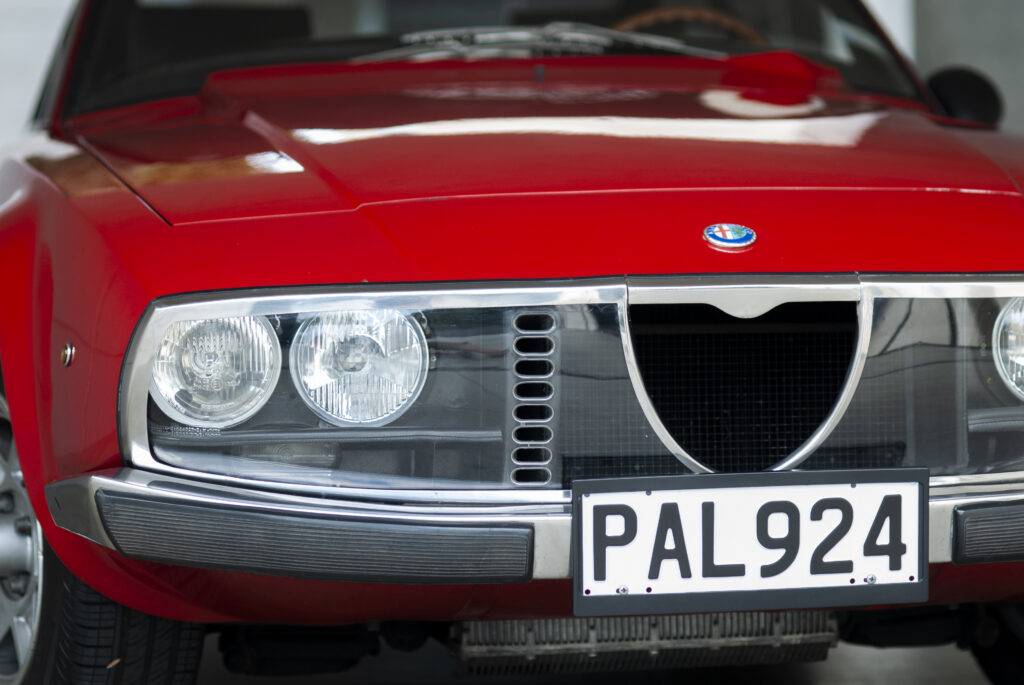
Alfa Romeo Junior Zagato 1600
Engine: Four-cylinder twin OHC
Capacity: 1570cc
Carburettor: Two Weber DCOE
Power: 125bhp
Transmission: Five-speed manual; RWD a with limited slip diff
Brakes: Discs all round
Suspension: Front coil springs with anti-roll bar; rear coil springs, radius arms, and de Dion axle
Dimensions
Length: 4000 metres
Width: 1550mm
Height: 1280mm
Weight: 1020kg
Performance
Top speed: 190kph



